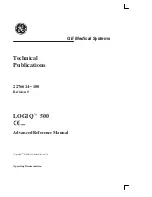
Visiomed – Alergo VM-911 – User manual V.3 - 200812
17/40
A
LLERGIC
R
HINITIS
Allergic rhinitis is defined by WHO (World Health Organisation) as an
acute or chronic inflammation of the nasal mucous (internal
covering of the nose), caused by allergens.
When an allergen is absorbed, the human body produces an allergic
reaction and releases a substance, histamine, which is mainly
responsible for the typical allergic symptoms.
This reaction is clinically characterised by at least one of the
following symptoms:
-
Sneezing,
-
Rhinorrhea (runny nose)
-
Nasal congestion (blocked nose)
-
Nasal pruritus (itching in the nose)
-
Inflammation of the nasal mucous
The symptoms are proportional to the concentration of allergens.
Other symptoms may also present:
-
Headaches (pain in the head),
-
Sensitive face,
-
Conjunctivitis,
-
Fatigue,
-
Loss of concentration and energy
-
Etc.
There are many types of allergic rhinitis:
1.
Seasonal allergic rhinitis
, more commonly known as hay
fever, caused pollen from trees, grasses and various herbaceous
plants. It occurs each year at the same season (see the pollen
calendar to ascertain periods when the pollen count is high), and is
the often associated with conjunctivitis.
















































